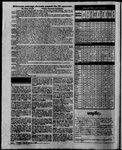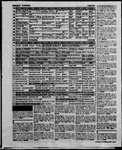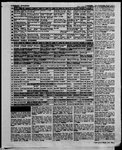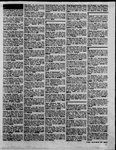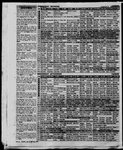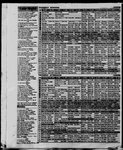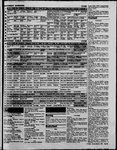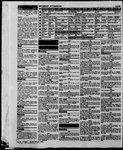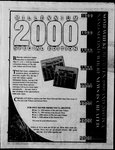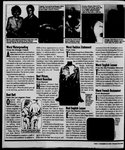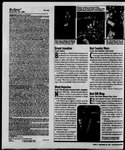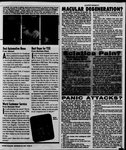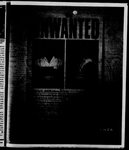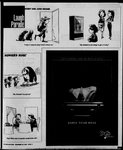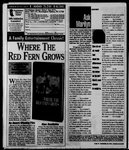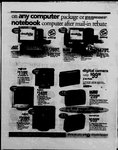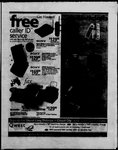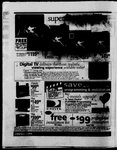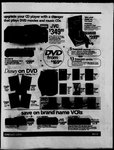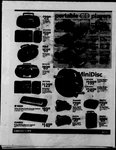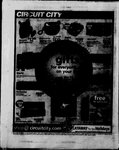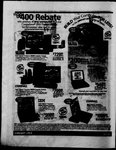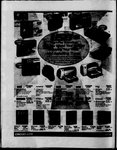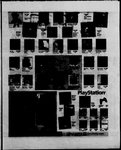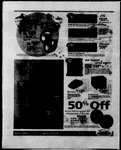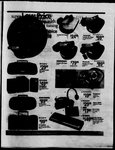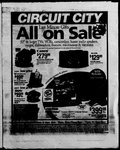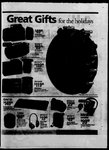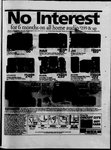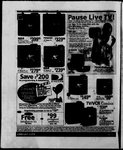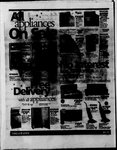| OCR Text |
Show RELENZA® (zanamivir for ra Pregnancy Category 8. Embryo/fetal development studies were conducted in rats (dosed from days 6 to 15 of pregnancy) and rabbits (dosed from {days 7 to 19 of pregnancy) using the same IV doses. Pre- and post-natal developmental studies were performed in rats {dosed from day 16 of pregnancy until litter The following is a brief summary only; see full prascnibing information for complete productinformation RELENZA is contraindicated in patients with a known hyperSensitivity to any component ofthe formulation PRECAUTIONS: General: Patients should be instructed in the use of the delivery system. Instructions should include « demonstration whenever possible, Pavents ‘should read andfollow carefully the PatientInstructions for Use accompanying the product, Effective and safe use of RELENZA requires proper use of the DISKHALER to inhale the drug. ‘sending information). No data are available to support safetyor efficacy in patients who begin treat- mentafter 48 hours of symatoms, Safety and efficacy of repeated treatment courses have not been studied. Pationts with Disease: Safety andefficacy have not been demonstrated in patients with undertying chronic pulmonary disease. In particular this product has not been shown to be effective, and maycarry risk, in patients with severe or decompensated chronic obstructive pulmonary diseaseor asthma. Bronchospasm was documented following administration of zanamiwr in 1 of 13 Patients with mild or moderate asthma(but withoutacuteinfivenza-like iliness) in phase 1 study. In interim results from an ongoing treatment study in patients with acute influenza-like iliness superimposed on underlying asthma or chronic obstruc‘ve pulmonary disease, More patients on zanamivir than on placebo experienced gfeater than 20% deciine in FEV: or peak expiratory flow rate Some patients with underlying respiratory disease may experience broncnospasm and/or decline in lung function when treatea with zanamivir Any patient who develops bron- chospasm or declinein lung function should stop the drug. Patients with underly- Ing respiratory disease should be instructed to have fast-acting inhaled bronchodiiator available when treated with zanamivir Prevention of influenza:Use of zanammvi should not affect the evaluation of individu‘als for annual influenza vacci Disease Control and Pr Safety and efficacy of zanarvir have not been established for prophylactic use of zanamivir to prevent influenza Limbations of Populetions Studied: Safety and efficacy have not been demonstrated In patients with high-risk underlying medical conditions (see INDICATIONS AND USAGE. Description of Ciinical Studiessection of full prescribing information). No information is available regarding treatmentofinfluenzain patients with any med- \eal condition sufficiently Severe or unstable to be considered at imminent risk of requinng patent management ntormation oe Patients: Patients should be instructed in use ofthe delivery system, Instructions should include demonstration whenever possible. For the proper use of RELENZA. the patient should read and follow carefully the secompanying Patent instructons for Use. Patients should be advised to finish the entire §-day course of treatment even it they start to feelbetter sooner Patients should be advised that the use of RELENZA for treatmentof influenza as not been shown to reduce the risk of transmission of influenza to others. Patients with esthma or chronic obstructive pulmonary disease should be ‘advised of the potential risk of with zanamivir, should have a fast-acting inhaled bronchodietor available, and should stop zanamivir and contact thesr physician promptly f they experience worsening resprratory symptoms Patents scheduled to take inhaled bronchodilators at the same vme as RELENZA should be advised to use their bronchodilators before taking RELENZA Drug laternctions: No clinically significant pharmacokinetic drug interactions are preActed based on data from in vitro studies. Corcieeguaneie, Mutogeneeis, sad impairmest of Fertility: Carcinepenesic in 2-yo0 ca'cinogenioty studies conducted in rats and mice using 8 powder formulation admininated ac enesnare induced no statistically significant increases in The maxumum daily exposures in rats and mice were approx: ‘rat23 to 26 ord 20 to 22 brn oapacovey, eater then thosehumane at the proposed clinical dose based on AUC compansons. Metagenesie: Zanarnivie wes Not mutagenic in in vitro and in vivo genotoxicity assays which included bectenal mutation assays in S. typhimunum and E. co mammalian mutaton assays in mouse lymphoma, oansue in human peripheral blood lymphocytes, and the in vivo mouse bone mar micronucleus assay. than 300 times the human exposure at the proposed clinical dose, Zanamivir hasbeen shown to cross the placenta in rats and rabbits. In these envmals, fetal blood concentrations of zanamivir were significantly lower than zanamivir concentrationsin the matemalblood no adequate and well-controlled studies of zanamivir in pregnant women. Zenamivir should be used during pregnancy only if the potential benefit |ustfies the potential risk to the fetus. Norsing Studies in rats have demonstrated that zanamivir is excreted in milk, Howaver, nursing mothers should be instructed that itis not known whether zanamvvitis excreted in human milk. Because manydrugs are excreted in human rik, caution should be exercised when RELENZA is administered to a nursing mother Pediatric Use: Safety anc effectiveness in pediatric patients below 12 years of age fertility of mate oF female rats, and did not affect the sperm of treated rate rats. study: fay 1 dose, AUC values ranged between 142 and 199 mog:hm. 200 tes the human exposure at the proposed clinical dose). Shoveling snow, like any strenuous ‘have not beenestablished. In thethree principal phase 3 treatment studies, 67 patients were 12 to 16 years of age. No definite differences in safety and efficacy were observed between these adolescent patients and young adults. Geriatric Use: Of the total numberof patients in clinical treatmentstudies of RELENZA, 59 were 65 and over, while 24 were 75 and over. No overall differences in safety or effectiveness were observed between these subjects and younger patients, and other reported clinical experience has notidentified differences in responses betweenthe elderly and younger patients, but greater sensitivity of some older individuals cannot be ruled out ADVERSE REACTIONS: Adverse events that occurred with an incidence 21.5% in treatment studies are listed in Table 1. This table shows adverse events occurring in patients recewing RELENZA 10 mginhaled twice daily, RELENZA in all inhalation regimens, and placebo inhaled twice daiy (where placebo consisted of the same lactose vehicle used in RELENZAY. ‘Table Summary ofAdverse Evosts 1.7% incidenceDuringTreatment RELENZA Aaverse Event Body as a whole | Headaches Digestive Diarrhea Nausea Voriting Reepirstory Nasa sgn and symotoms Bronch Covgh Sirusins Ear, nose, & throat infectons Nervous Duzness “Omg bid inhaled ‘Al Dosing Regmens* (n= 2289) (n = 1820) 2% 3% 3% 1% 2% 2% 2% 3% 2% 2% 2% 3% 3% 1% 3% 2% 2% 2% 1% 1% % 4% 3% 2% 3% 3% 3% 2% 2% <1% ine 1132) “Includes studies where RELENZA was administered intranasally (6.4 mg 2 to 4 times per day in addition to inhaled preparation) and/or inhaled more frequently {q.1.d,) than the currently recommended dose. ‘Because the placebo consisted of inhaled lactose powder which is also the vehicle for the active drug. some adverse events occurring at similar frequencies in different treatment groups could be related to lactose vehicle inhalation. Additional adverse reactions occurring in less than 1.5% of patients receiving RELENZA included malarse, fatigue, fever, abdominal pain, myalgia, arthralgia, and urticana, The most frequent laboratory abnormalities in phase 3 treatment studies includ0 elevations of liver enzymes and CPK. lymphopenia, and neutropenia. These ware reported in similar proportions of zanamivir and lactose vehicle placebo recipyents with acute influenza-ike iliness, See PRECAUTIONSfor safety information in patients with underlying respiratory disease OVERDOSAGE: There have been no reports of overdosage from administration of RELENZA. Doses of zanamivir up to 64 mgfday have been administered by nebuk @F. Additionally, doses of up to 1200 mg/day for 5 days have been administered intravenously. Adverse effects were similar to those seen in clinical studies at the recommended dose IepoinmentofForti: The ottects of zanamivr on fertility end general reproductive partum) at IV doses 1, 9, and 90 mg/kg per day. Zanamivir did not impaw mating oF Peem reproductive toxicity studies, AUC vaiues were not available, However, in a Subchronic study in rats at the 90-ng/kg-per-day IV dose, the AUC values were greater The Thereis No evidencefor efficacy of zanamivir in anyiliness caused by agents other than influenza virus A and 8. Data on treatmentof influenza B are limited (see INDICATIONS AND USAGE: Description of Clinical Studies section offull pre- lumors Over day 21 to 23), In al studies, intravenous(1, 9, and 90 mg/kg per day)instead of the inhalational route of drug administration was used. No malformations, maternal toxicity, or embryotoxicity were observed in pregnant rats or rabbits and their fetuses. Because of insutficient blood sampling timepoints in both rat and rabbit GlaxoWellcome Giaxo Wellcome Inc Research Trangle Park. NC 27709 US Patent Nos. 4,627,432; 4,778,064; 4,811,731; 6,360,817; 6,648,379; §,096,237 Des, 379,508 © Copynght 1999, Glaxo Weticome Inc. All nghts reserved. July 1999 RL-728 © 1999 Glaxo Wolicome Inc. All nghts reserved. Printed in U.S.A. RLZ139R0 December 1999 blood pressure and heart Tate. At the same time, cold air can trigger constriction ofthe coronary arteries. Coupled with the fact that most asymptomatic people assumetheyare free of heart disease, tragedy oc- tg ghevel curs: sudden cardiac death, Barry A. Franklin, an adjunct professor ofphys- for yout? iology at Wayne State University, studied the effects ofsnow shoveling on 10 inactive men (average age 32) with no histoty ofheart or lung disease or high blood pressure. Afterjust two minutes, most of the men’s heart rates exceeded the upper limits prescribed for aerobic training and continued to climb. After 10 minutes, the average shoveler had lifted nearly a ton of snow.Franklin's report, in the Health & Fitness Journal of the American College of Sports Medicine, recommends: © Avoid large meals, alcohol and tobacco before and after shoveling. © Weara breathing mask or scarf to avoid inhaling cold air. tors such as high blood pressure, smoking, high cholesterol or are overweight. Better still, boost the local economy: Hire a high schoolerto shovelfor you. |











































































































































